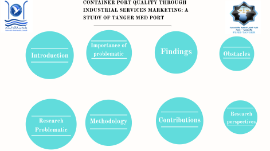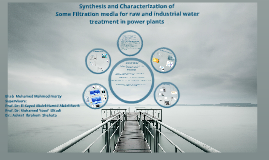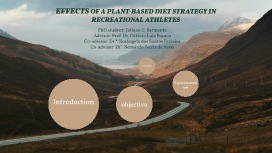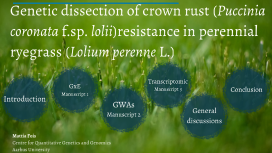PhD presentation
Transcript: University of Milan - Sport science- 2018 Erasmus: research assistant and "friluftsiftliv" Elena Physical Activity - Has been called "medicine" - Key role in public health to maintain and improve health in the entire population - Disease prevention Physical Activity every moved counts something is better than nothing more is better Guide lines: - 1h30'/5h - 1h15'/2h30' - Twice a week WHO, 2020 Taylor, 2014 Haskel et al., 2007 Health Report by WHO (European Health Report 2020) Problem Enhancing well-being is identified as a key target of health policies. Not only objective indicators can measure well-being, qualitative indicators and subjective experiences are also important Overweight and obesity are on an upward trend in almost all Europe Worldwide, 31.1% of adults are physically inactive Mental disorders affected 12% of the entire population and are a major public health challenge. One person in five will develop depression. Suicide from depressive disorders is the third leading cause of death among young people Chronic diseases are the biggest contributor to mortality and disability in Europe Average expenditure ranging of 10.8% GDP in Nordic countries Why prevention? Economic and social development Quality of life of every single person Health and Prevention Real health benefits can be attained at an affordable cost (if effective strategies are adopted) Avoid diseases onset Prevention interventions are far from developed, more effort and resources must be invested in this area. WHO defines a "multi-sectoral approach” as a strategic priority to bring better health and well-being to people. NATURE ENGAGEMENT Man and Nature Theoretical underpinning: Provide physiological and psychological benefits across socioeconomic strata. Green spaces has beneficial effects such as improved mental health, reduced cardiovascular morbidity and mortality, obesity and risk of type 2 diabete (WHO, 2017) Umbrella-term: Health-related behaviours regarding human nature interactcion Passive Exposure to nature PASSIVE EXPOSURE TO NATURE Viewing nature in different ways Promote positive changes in attention, memory and mood (NORDWOOD ET AL., 2019) Provide benefits for hospitalized patients (WILSON, 1984) GREEN EXERCISE GE is physical Activity that take place in the presence of natural environment. Active exposure to nature GREEN EXERCISE Outdoor VS Indoor: lower rating of perceived exertion (GLADWELL ET AL., 2013) long therm adherence and extrinsic motivation to exercise (GLADWELL ET AL., 2013) positive influence on physical activity behaviours by providing powerful emotional experiences (CALOGIURI ET AL., 2015) Intention for future exercise (BOWLER ET AL., 2010) GE offers superior benefits on mental health and well-being factors: stress anxiety mood disturbance improve self-esteem Attention (ART) Life satisfaction Mental Health and well-being (BRATMAN ET AL., 2019) CONNECTEDNESS WITH NATURE Individual levels of feeling emotionally connected to the natural world CONNECTEDNESS WITH NATURE Including nature in the self is not a new concept. Biophilia is defined in the '80s as an innate affinity of human beings with the natural world (WILSON., 1984) Numerous studies highlight how CN is linked with well-being measures. In particular, CN seems to meet basic psychological needs (self-efficacy, relatedness) and leads to long term benefits, such as pro-social behaviour and functioning well psychologically (RYAN & DECI, 2009; SHEFFIELD & LUMBER, 2019) NATURE DISCONNECTION Urban environment (68% of the population will live in cities by 2050) (UNITED NATION) Green opportunities (BRATMAN ET AL., 2019) De-naturalisation of cities (MACINTYRE ET AL., 2019) Green World? Nature deficit disorder: Impact across generation, especially younger adults (SMITH ET AL., 2019) Happiness and life satisfaction (CAPALDI ET AL., 2014) Long-term impact on children (BUNGLEY & MILLIGAN, 2004) VIRTUAL REALITY "a computer simulation that replaces or auguments the feedback to one or more senses, giving the feeling of being mentally immersed or present in the simulation" (SHERMAN & CRAIG, 2003) Virtual Reality PRESENCE: the subjective feeling of “being in the virtual environment” IMMERSION: the extent to which a computer-generated environment is “capability of delivering an inclusive, extensive, surrounding, and vivid illusion of reality to the senses of a human participant” (SLATER AND WILBUR, 1997) Different types of VR (Screen, HMD, mixed) and video successfully used in several fields: tourism, rehabilitation, medicine and psychological Immersive Virtual Environment Immersive Virtual Environment Head Mounted Display 360 video Headset A synthetic sensory information that provide a surrounding and continuous stream of stimuli, creating the illusory perception of being enclosed within and interacting with a real environment (Loomis et al., 1999; Smith, 2015) Technological Nature "Technologies that in a various way mediate, augment and simulate our experience of the

















